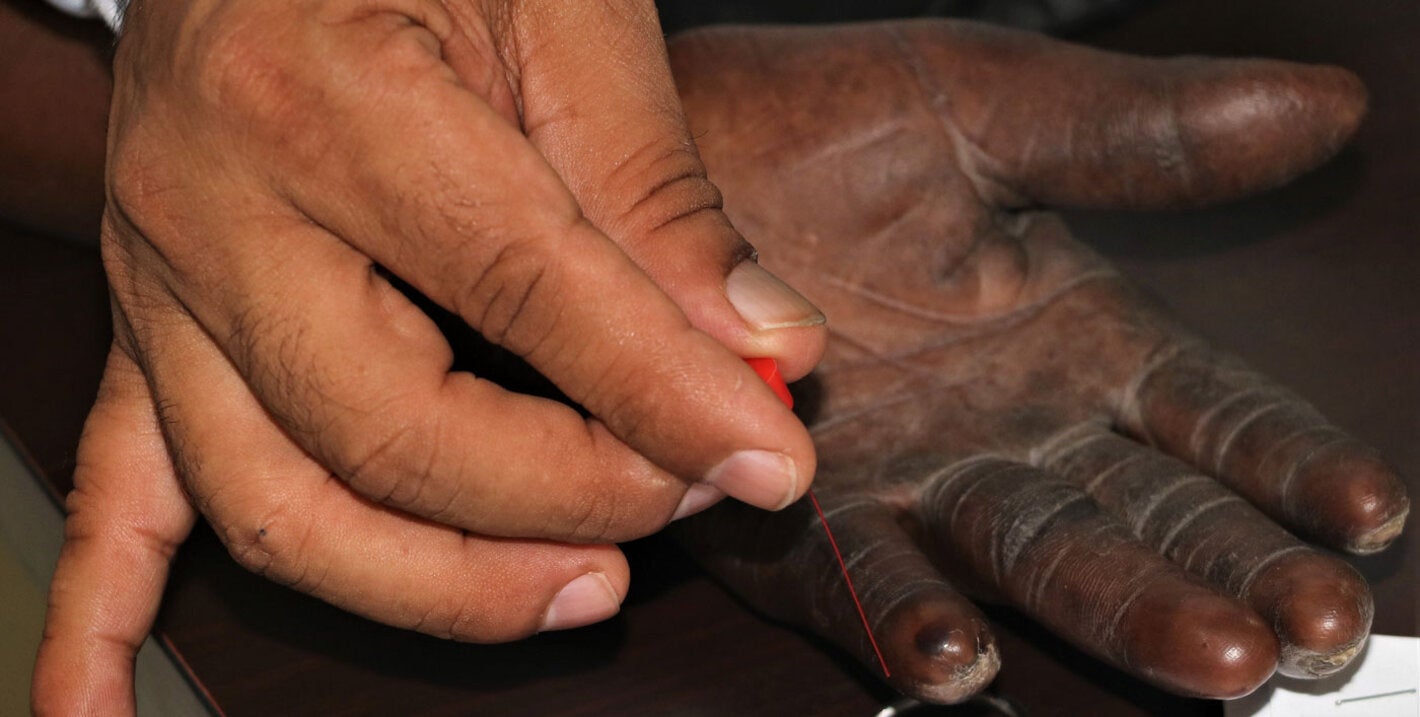
Washington, D.C., 25 January 2019 (PAHO/WHO) - While cases of leprosy have fallen in the Region of the Americas, by 30% over the past 20 years, discrimination, stigma and prejudice surrounding the disease continue to hamper efforts to further stop its transmission.
Countries have already made significant advances in the fight against leprosy, but we must now focus efforts on maintaining this progress and eliminating transmission. This year’s World Leprosy Day is a timely reminder that attitudes are the final obstacle to overcome.
For this year’s World Leprosy Day, held on 27 January, the Pan American Health Organization (PAHO) is calling on countries to increase efforts to address stigma and discrimination in order to put an end to this easily curable disease.
“Throughout history, people affected by leprosy have continued to suffer stigma and discrimination,” said Dr. Marcos Espinal, Director of Communicable Diseases and Environmental Determinants of Health at PAHO. “Not only has this led to people affected by the disease being denied access to care, education and even free movement, but this continued discrimination means that many are still reluctant to seek medical treatment until symptoms have already become life-altering.”
Currently, more than 200,000 new cases of leprosy are detected worldwide each year, 80% of which occur in three countries – Brazil, India and Indonesia. Leprosy has been eliminated in 23 countries of the Americas as a public health problem, meaning that there is less than 1 case of leprosy per 10,000 habitants registered for treatment in the country. In 2017, 29,101 new cases of leprosy were recorded in the Region. Over 93% of these were reported in Brazil.
“Countries have already made significant advances in the fight against leprosy, but we must now focus efforts on maintaining this progress and eliminating transmission. This year’s World Leprosy Day is a timely reminder that attitudes are the final obstacle to overcome,” added Dr. Espinal.
In order to address stigma and discrimination around leprosy, PAHO has been supporting countries of the Americas in the implementation of the World Health Organization’s (WHO) Global Leprosy Strategy 2016-2020.
The Global Leprosy Strategy outlines three overarching pillars to ensure a world with zero disease, zero transmission, zero disability and zero stigma related to leprosy. These pillars focus on strengthening government ownership, coordination and partnership; stopping leprosy and its complications; and ending discrimination and promoting inclusion.
The Global Leprosy Strategy also calls for a variety of measures to address discrimination towards those affected by leprosy. These include ensuring that people with leprosy, as well as their communities, are empowered to participate actively in leprosy services; that those with leprosy have better access to social and financial support services; that community-based rehabilitation for people with leprosy-related disabilities is promoted; and that discriminatory laws are abolished, and policies implemented to facilitate the inclusion of people affected by leprosy.
Leprosy is a chronic, transmissible condition caused by the bacteria, Mycobacterium leprae, which multiplies slowly, leading to symptoms that can take as long as 20 years to appear. Leprosy primarily affects the peripheral nerves and is associated with characteristic skin lesions. Untreated, it can cause nerve damage, demonstrated by weakness in the hands and feet and the presence of visible deformity. While leprosy is completely curable with free, multidrug therapy (MDT), delays in treatment can lead to permanent disability.
World Leprosy Day is observed each year on the last Sunday in January. The aim of the day is to raise awareness of the disease and reduce stigma against those who suffer from it.



